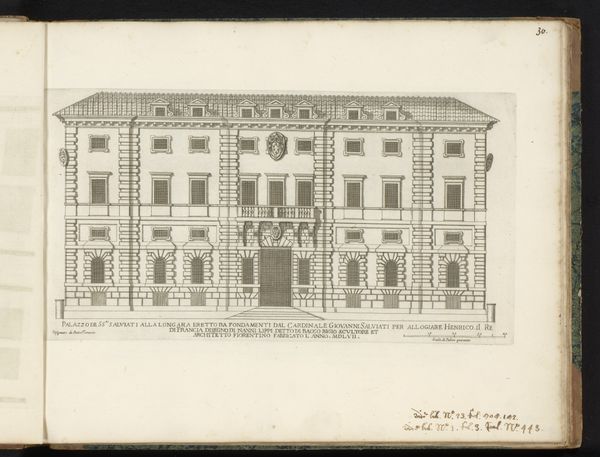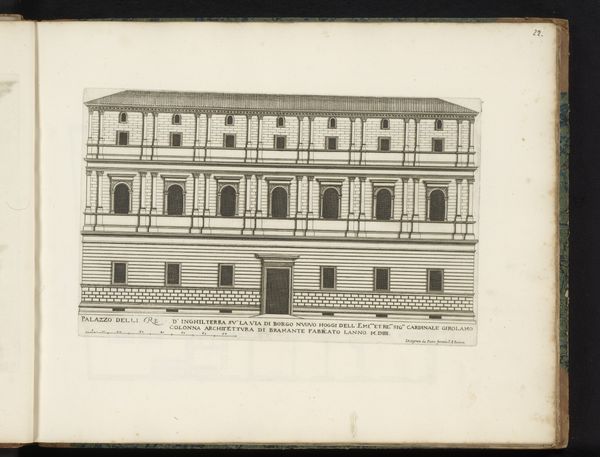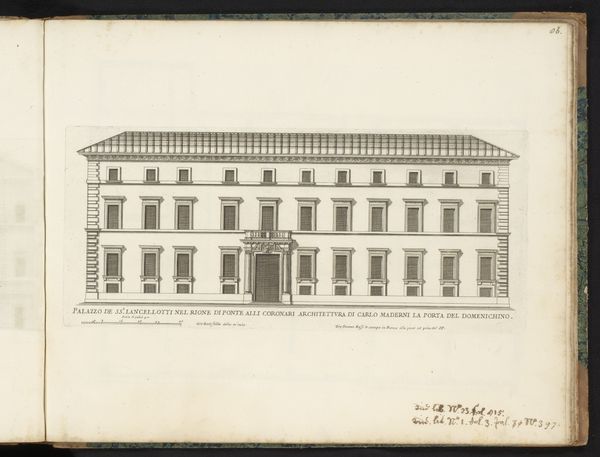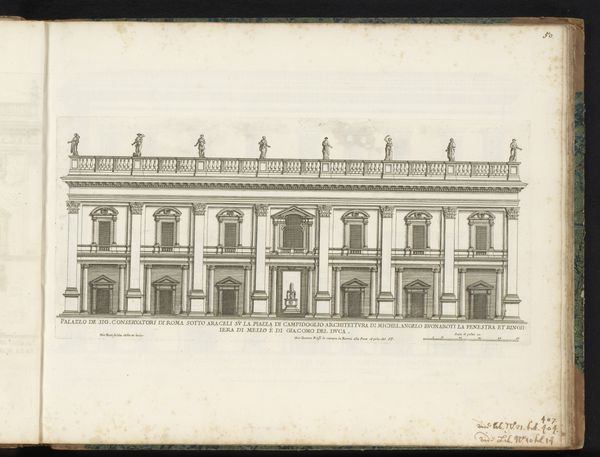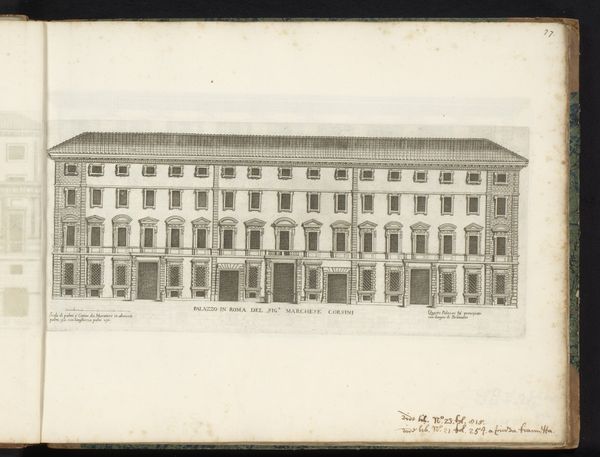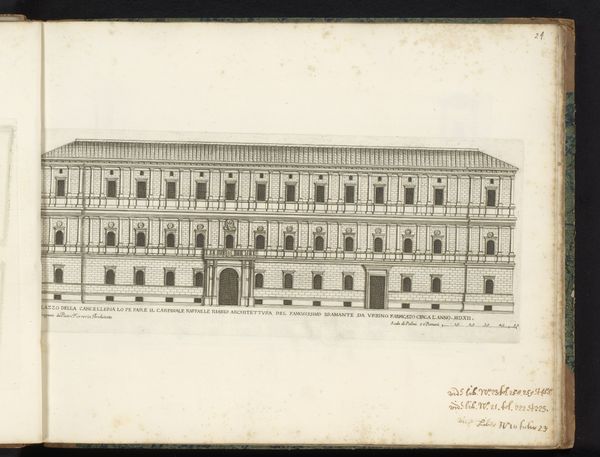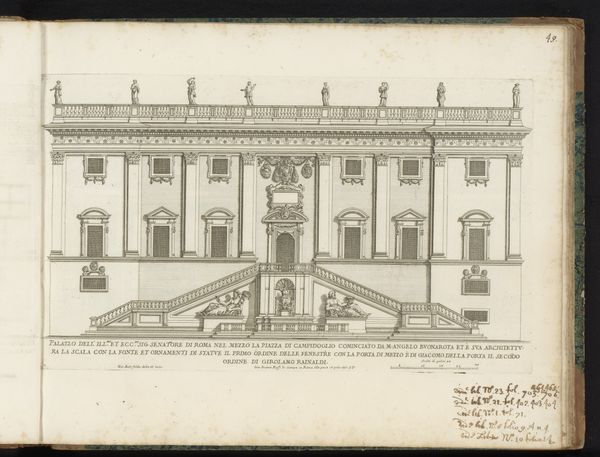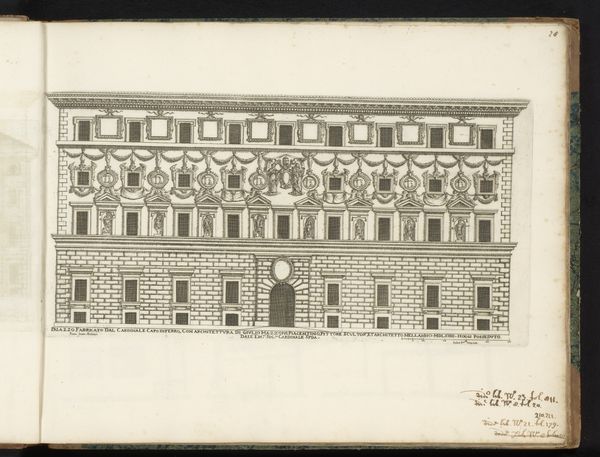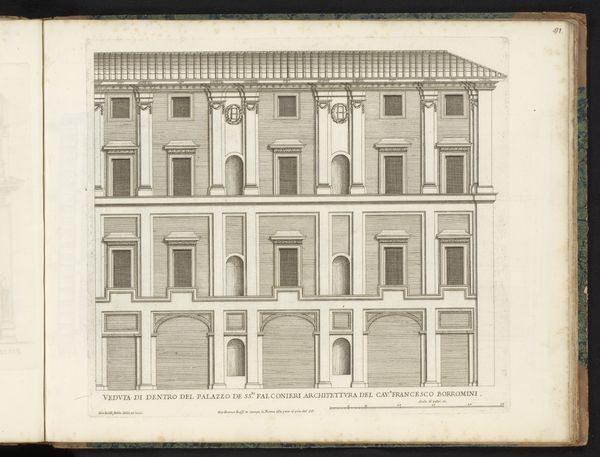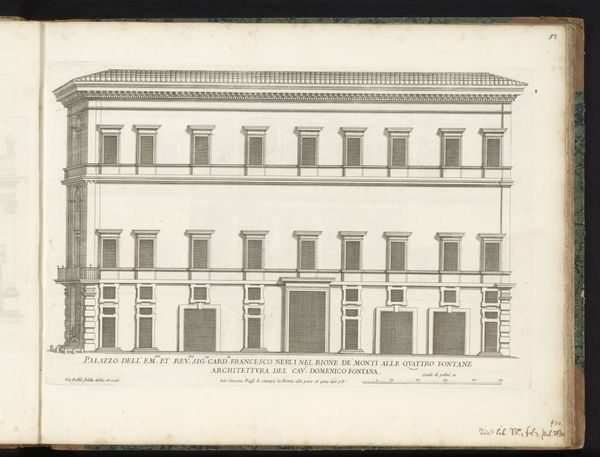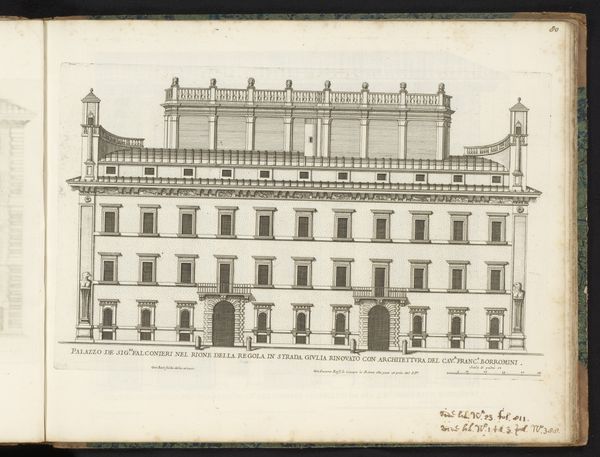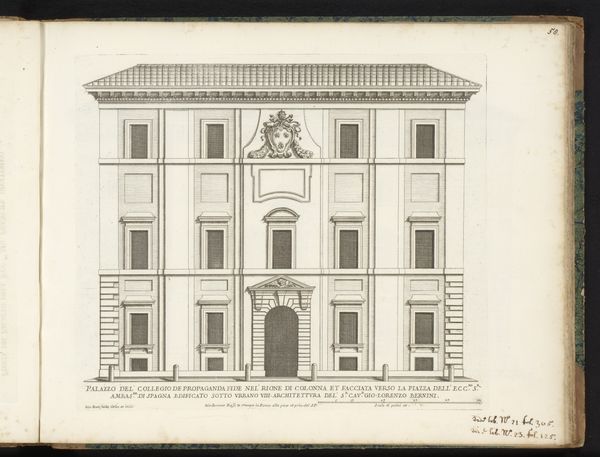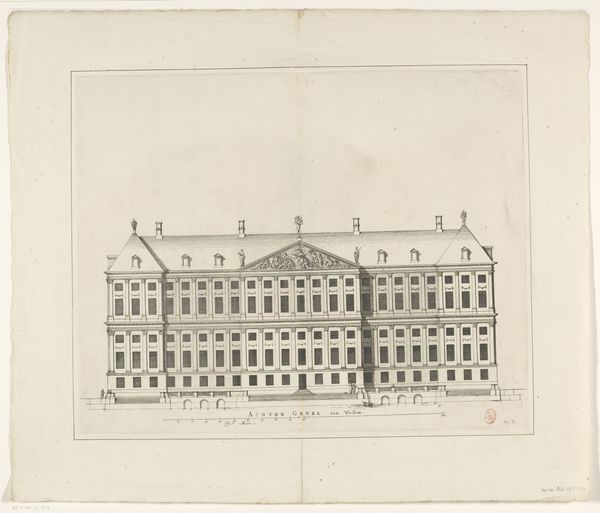
drawing, paper, ink, architecture
#
drawing
#
paper
#
ink
#
coloured pencil
#
line
#
cityscape
#
architecture
#
building
Dimensions: height 220 mm, width 420 mm
Copyright: Rijks Museum: Open Domain
Curator: Here we have a drawing entitled "Zijgevel van Palazzo Borghese," or "Side View of Palazzo Borghese," dating from after 1655. It's attributed to Giovanni Battista Falda. The piece, rendered in ink on paper, resides here at the Rijksmuseum. Editor: It strikes me as remarkably restrained for a palace. There's a geometric, almost grid-like quality to the façade. I can't help but wonder about the social hierarchy embedded in such architectural rigidity. Curator: That’s a good point. Falda created these detailed architectural prints for a specific market, those interested in the projection of power and prestige of Rome’s elite families, which shaped urban spaces and consolidated political control through these buildings. Editor: Absolutely. Each window, each perfectly aligned detail, reinforces a sense of control, but the image also begs the question: who wasn’t allowed inside, both physically and symbolically? What does this rigidity convey about the period and class structure? The cool detachment seems calculated. Curator: Well, these structures functioned as stages for elaborate displays of wealth and influence, and these engravings served as promotional tools, circulating ideals about family prestige and urban grandeur. This particular drawing emphasizes order and classical proportion – ideas central to Baroque aesthetics as they expressed papal and aristocratic power. Editor: But how did ordinary people navigate this carefully constructed world? Did these imposing facades inspire awe or alienation? How did Falda’s representation reinforce, or perhaps subtly critique, existing power structures? Curator: He captured what patrons wanted to showcase. The focus on external symmetry can definitely seem divorced from the complex realities inside – the intricate politics and intense rivalries within these very families. These prints, meant for public consumption, offered a carefully curated image of stability and power. Editor: This drawing feels more like a calculated assertion of dominance than an invitation to experience beauty. It's a compelling example of how art and architecture serve ideological purposes, broadcasting and solidifying socio-political hierarchies. Curator: Considering the time and function gives us a valuable insight into not only the physical representation but also the cultural context this drawing represents. Editor: Indeed, it reminds us of art’s active role in shaping social perceptions and its complicated relationship to power dynamics.
Comments
No comments
Be the first to comment and join the conversation on the ultimate creative platform.

